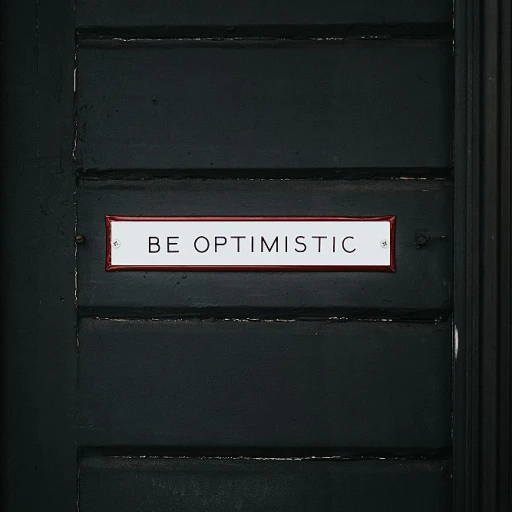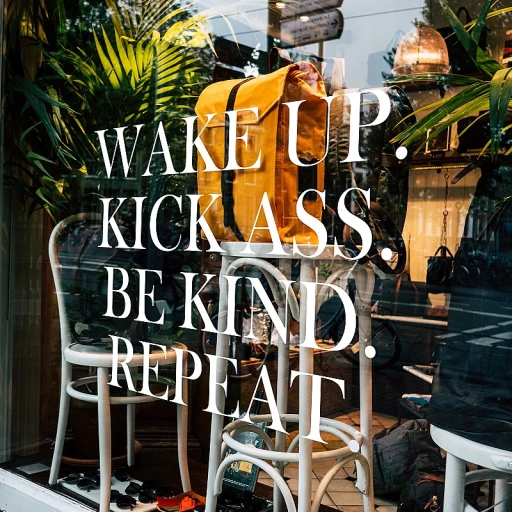
Understanding the Role of Pop-Ups in Onboarding
The Strategic Use of Pop-Ups in Mobile Onboarding
The onboarding process is a critical phase for any mobile app, where first impressions lay the groundwork for user retention and engagement. Among the numerous strategies employed in onboarding, the use of pop-ups stands out for its versatility in facilitating smooth user integration. These pop-ups serve as a direct communication channel between the app and its users, offering guidance, incentives, or collecting feedback. When designed effectively, popup windows can enhance the onboarding experience by providing essential information without overwhelming the user. They play a crucial role in directing users towards taking specific actions, like subscribing to an email list, exploring a feature, or completing their profile. Through carefully crafted popups, apps can encourage initial interactions that set the tone for long-term user engagement. To maximize the effectiveness of pop-ups in onboarding, consider the user journey on mobile devices. Provide context-specific suggestions or guidance at critical junctures, leveraging elements like exit intent to bring back users who are about to leave the app. This approach not only enhances user experience but also boosts retention. Let's not forget about the importance of understanding best mobile UX practices which can be seamlessly integrated into popup strategies, ensuring that the design remains intuitive and non-intrusive. By doing so, pop-ups can truly become a powerful tool in achieving a seamless and engaging onboarding journey on mobile apps.Key Elements of Successful Pop-Up Designs
Designing Engaging Pop-Ups for Optimal User Experience
Creating an effective mobile app pop-up design requires a delicate balance between engagement and user-friendliness. Key elements can transform simple popups into powerful onboarding tools that both capture attention and guide users seamlessly through your app.- Clear Call to Action (CTA): Every popup should have a clearly defined CTA button. Whether this is encouraging users to sign up for a free plan or prompting them to join an email list, ensure it's concise and direct.
- Minimalist Design: The best popups are straightforward and clutter-free. Overcrowding the screen with text or images can overwhelm mobile users, deterring them from taking the desired action.
- User-Friendly Layout: Keep in mind the responsive nature of mobile devices. Your pop-up design should adapt seamlessly across various screen sizes, enhancing the overall mobile experience without forcing users to zoom in or scroll unnecessarily.
- Timing and Context: A well-timed mobile popup can significantly boost engagement. For instance, exit intent popups can retain visitors who are about to leave your site, offering them a product discount or some other incentive.
- Intuitive Close Button: Users should always have the option to easily dismiss the popup if they're not interested. An accessible close button fosters trust and provides a user-friendly experience.
Common Mistakes in Pop-Up Design
Stumbling Blocks in Crafting Optimal Pop-Up Designs
While popups serve as an essential tool in enhancing mobile app onboarding, many designs can inadvertently trip over common mistakes that undermine their effectiveness. Let's explore some pitfalls to watch out for when creating a popup experience that is both engaging and mobile friendly.
- Overwhelming Amount of Information: One primary mistake is cramming too much information onto a single screen. Mobile users are typically looking for quick, digestible content. Ensure that each mobile popup conveys a single, clear action or message that guides the user towards a specific step in the onboarding process.
- Lack of Clear Call to Action (CTA): The absence of a compelling cta button can hinder the user's ability to know what action to take next. A mobile popup should include a prominently placed action button with clear, concise text that helps users identify the next logical step, whether it's signing up for a free plan or downloading a product template.
- Inappropriate Timing and Frequency: Bombarding users with too many popups in quick succession can lead to frustration and result in higher exit intent. Instead, strategically time the popups to align with key moments in the app design flow, ensuring they don't disrupt the user experience but enhance it.
- Ignoring User Consent: Ensure that there's always a visible and user friendly close button. This respects users' autonomy and decision-making power, preventing them from feeling trapped and potentially disengaging from the app.
- Poor Mobile Responsiveness: On mobile devices, popups that are not optimized for the smaller screen can hinder navigation and reduce interaction rates. Mobile popups should be seamlessly integrated into the app design, ensuring a responsive and visually appealing layout.
For small enterprises aiming to optimize their app's onboarding process, understanding these common missteps is key. By adhering to best practices in popup design, businesses can significantly boost user engagement and enhance the overall mobile app user experience. For further insights into creating a robust onboarding strategy, consider exploring this guide to onboarding software for small enterprises.
Case Studies: Successful Pop-Up Implementations
Examples of Pop-Ups Driving User Action
When it comes to crafting a successful mobile app pop-up design, learning from case studies can provide invaluable insights. A well-executed pop-up can enhance user experience and drive user action while maintaining the app's overall effectiveness. Let's explore some examples that exemplify these principles.
One common approach is to use popups for an exit intent strategy. By detecting when a user is about to leave the app or website, a carefully timed pop-up can re-engage them with a compelling call to action, such as a free plan sign-up or a special offer. This approach not only increases the likelihood of retaining visitors but can also build an email list efficiently.
For instance, a mobile app with a free plan option can leverage a pop-up that appears after a few minutes of inactivity. By highlighting the benefits of staying with a brief message and a clear CTA button, the app entices users to explore more of what the product has to offer. The key is to make the pop-up user friendly, with a design that’s not intrusive and easy to close if the user chooses to.
Other successful implementations involve using a mobile-friendly template that aligns with the app's overall design aesthetics. Ensuring the pop-up is visually appealing, the message is concise, and the CTA button is prominently placed can positively influence user interaction. Best practices in these scenarios highlight the importance of testing different pop-up designs to see which works best with your user demographics and app design.
Enhancing Mobile App Performance
Mobile popups must be optimized not only for design but for performance on mobile devices. This is crucial to prevent any negative impact on the app's functionality or user experience. A mobile-friendly pop-up should load quickly, operate smoothly across various screen sizes, and integrate seamlessly into the app's flow.
Apps that excel in this area often employ pop-up designs that are tested extensively across different devices, ensuring every user has a smooth experience. Such popups are crafted with the recognition that speed, accessibility, and ease of use directly affect the app's success and user satisfaction.
The examples shared here illustrate that effective pop-up design is a balancing act. By strategically using popups and tailoring their design to fit your specific mobile app environment, you can significantly enhance user engagement without sacrificing the quality of user experience.
Balancing Pop-Up Frequency and User Experience
Finding the Right Balance
When it comes to popups in mobile app onboarding, striking the right balance between frequency and user experience is crucial. Too many popups can overwhelm users, leading to frustration and potentially driving them away from your app. On the other hand, too few popups might result in missed opportunities to engage users effectively.
Understanding User Behavior
To achieve this balance, it's essential to understand user behavior and preferences. Analyzing data on how users interact with your app can provide insights into when and where popups are most effective. For example, a well-timed mobile popup that appears after a user completes a specific action can guide them to the next step in the onboarding process without being intrusive.
Implementing Best Practices
Implementing best practices in popup design can significantly enhance user experience. Consider the following tips:
- Frequency: Limit the number of popups to avoid overwhelming users. A good rule of thumb is to use popups sparingly and only when they add value.
- Timing: Ensure popups appear at the right moment, such as after a user completes a task or when they show exit intent.
- Design: Keep the design user-friendly and mobile-friendly. Use clear and concise language, and ensure the CTA button is easy to find and click.
- Close Button: Always include a visible close button, allowing users to dismiss the popup easily if they choose.
Examples of Effective Popup Strategies
Some successful mobile apps have mastered the art of balancing popup frequency with user experience. For instance, an app might use a welcome popup to introduce new users to its features, followed by a strategically placed popup offering a free plan or template after users have explored the app for a few minutes. This approach not only engages users but also encourages them to take action without feeling pressured.
In conclusion, finding the right balance in popup frequency is key to creating a seamless onboarding experience. By understanding user behavior and implementing best practices, you can design popups that enhance user engagement and satisfaction.
Future Trends in Pop-Up Design for Onboarding
Emerging Trends in Mobile Pop-Up Design
The landscape of mobile pop-up design is rapidly evolving, driven by technological advancements and changing user expectations. As mobile devices become more integral to daily life, the demand for seamless and engaging user experiences is higher than ever. Here are some of the trends shaping the future of pop-up design in onboarding:
- Personalization: Users are increasingly expecting personalized experiences. Popups that adapt to user behavior, preferences, and past interactions can significantly enhance engagement. For example, a mobile app might use data analytics to tailor popups based on a user's previous actions, making the experience more relevant and less intrusive.
- Interactive Elements: Incorporating interactive elements such as quizzes or sliders can make popups more engaging. These elements not only capture attention but also provide valuable insights into user preferences, which can be used to refine the onboarding process.
- Minimalist Design: As discussed in the key elements of successful pop-up designs, simplicity is crucial. Future popups will likely continue to embrace minimalist design principles, focusing on clear, concise messaging and intuitive call-to-action buttons.
- AI and Machine Learning: Artificial intelligence is set to play a significant role in popup design. By leveraging AI, mobile apps can predict user behavior and optimize popup timing and content, ensuring a more user-friendly experience.
- Augmented Reality (AR): With the rise of AR technology, popups could become more immersive. Imagine a mobile app using AR to create popups that blend seamlessly with the real world, offering a unique and engaging onboarding experience.
- Exit Intent Technology: Originally popular on websites, exit intent technology is making its way to mobile devices. This technology detects when a user is about to leave the app and triggers a popup with a compelling offer or message, encouraging them to stay engaged.
As these trends continue to develop, the challenge will be to balance innovation with user experience. The best practices in popup design will always prioritize the user's needs, ensuring that popups enhance rather than hinder the onboarding process.












